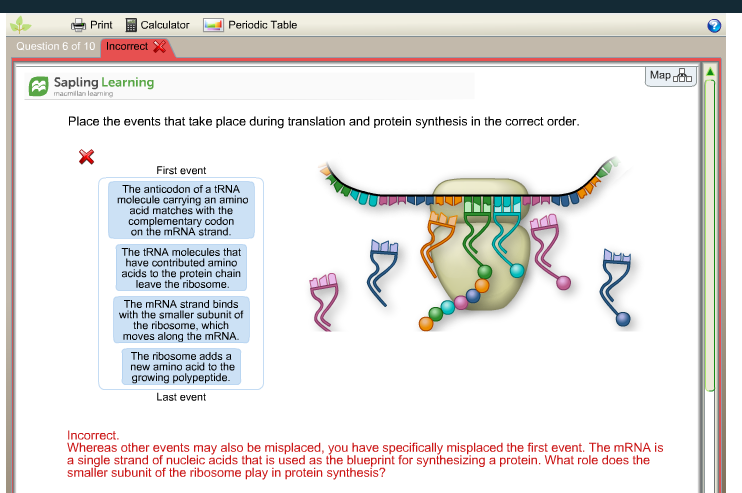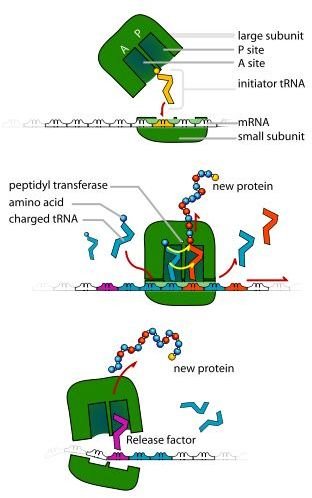
Any errors or disruptions in the order of events can result in defective proteins that may not function correctly. Q: Why is the order of events important in translation and protein synthesis?Ī: The order of events is important in translation and protein synthesis because each step is necessary for the proper formation of a functional protein. Protein folding: After translation, the newly synthesized polypeptide chain undergoes several modifications, including folding and post-translational modifications, to form a functional protein. A release factor binds to the stop codon, causing the ribosome to release the completed polypeptide chain. Termination: This is the final step in translation, where the ribosome reaches a stop codon on the mRNA. The ribosome reads each codon on the mRNA and matches it with the appropriate tRNA carrying the corresponding amino acid. The initiator tRNA then binds to the start codon, AUG, on the mRNA.Įlongation: During this step, the ribosome moves along the mRNA, adding amino acids to the growing polypeptide chain. Initiation: This is the first step in translation, where the mRNA binds to the small subunit of the ribosome.Q: What are the events that take place during translation and protein synthesis?Ī: Translation and protein synthesis involve several steps that occur in a specific order. By understanding the events that take place during translation and protein synthesis, we can gain a better understanding of how living organisms function at a molecular level. Both of these processes are essential for the production of proteins, which are the building blocks of life. During protein synthesis, the DNA sequence that codes for a specific protein is copied into an mRNA molecule, and the mRNA molecule is then translated into a protein. During translation, the mRNA molecule is decoded by the ribosome, and a protein is synthesized from the amino acids carried by the tRNA molecules. In conclusion, translation and protein synthesis are two essential processes that take place in all living organisms. These modifications help to ensure that the protein is correctly folded and functional.

These modifications include folding, glycosylation, phosphorylation, and cleavage. Once the protein has been synthesized, it may undergo several modifications before it can be fully functional. The next step of protein synthesis is translation, which we have already discussed in detail.

These modifications help to stabilize the mRNA molecule and facilitate its transport out of the nucleus. These modifications include the removal of introns (non-coding regions) and the addition of a cap and tail to the mRNA molecule. Once the mRNA molecule has been synthesized, it undergoes several modifications before it can be used to build a protein. This process is carried out by RNA polymerase, an enzyme that reads the DNA sequence and synthesizes the complementary mRNA molecule. During this step, the DNA (deoxyribonucleic acid) sequence that codes for a specific protein is copied into an mRNA molecule. The first step of protein synthesis is transcription. The events that take place during protein synthesis are as follows: Protein synthesis is the process by which cells build proteins. The completed protein is then released from the ribosome and folds into its final three-dimensional structure. During this step, the ribosome reaches a stop codon, which signals the end of protein synthesis. The final step of translation is termination. Each codon is recognized by a specific tRNA (transfer RNA) molecule, which carries the corresponding amino acid. During this step, the ribosome moves along the mRNA molecule, reading the codons and bringing in the correct amino acid to form a growing peptide chain.

The second step of translation is elongation. The start codon signals the ribosome to start translating the mRNA molecule. During this step, the small ribosomal subunit binds to the mRNA molecule at the start codon, which is usually AUG (adenine, uracil, and guanine).

The first step of translation is initiation. The events that take place during translation are as follows: Translation is the process by which the genetic information stored in the mRNA (messenger RNA) is decoded and converted into a sequence of amino acids to form a protein.


 0 kommentar(er)
0 kommentar(er)
